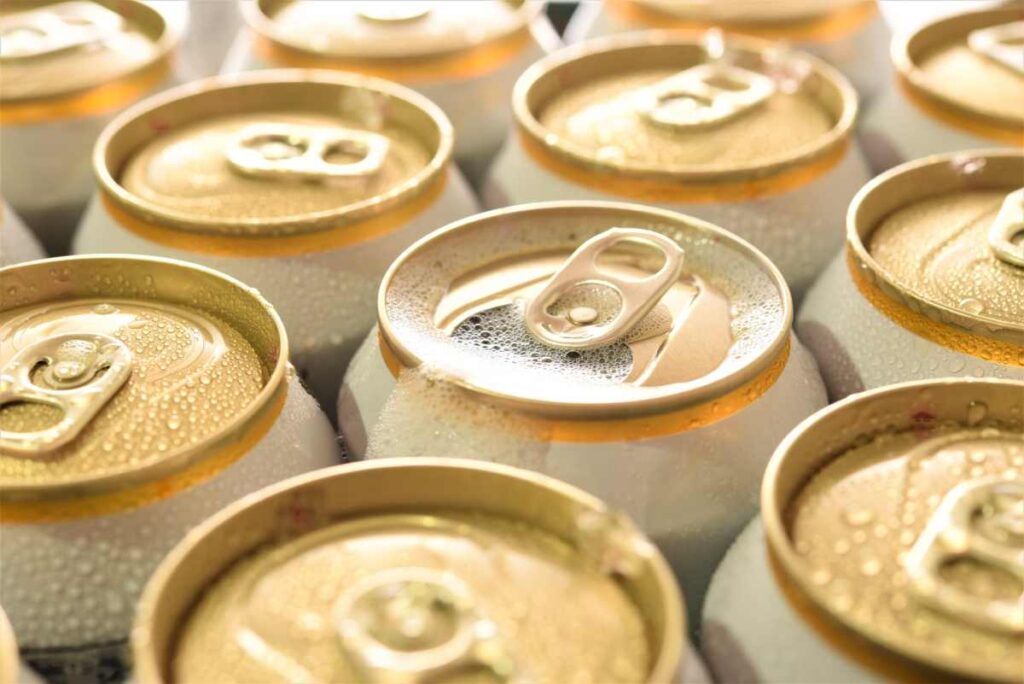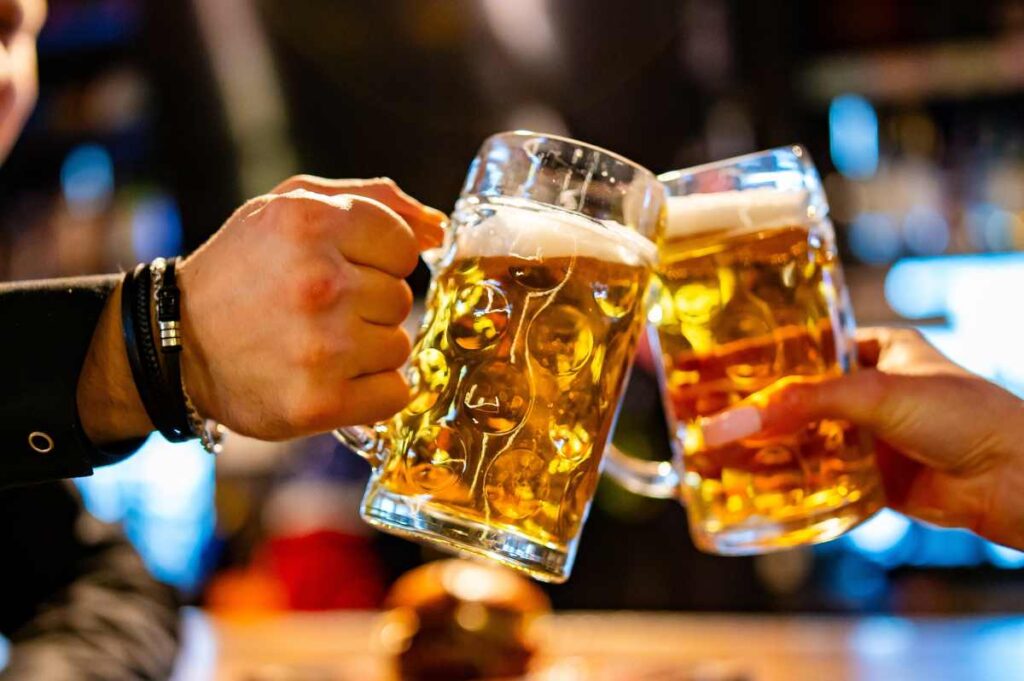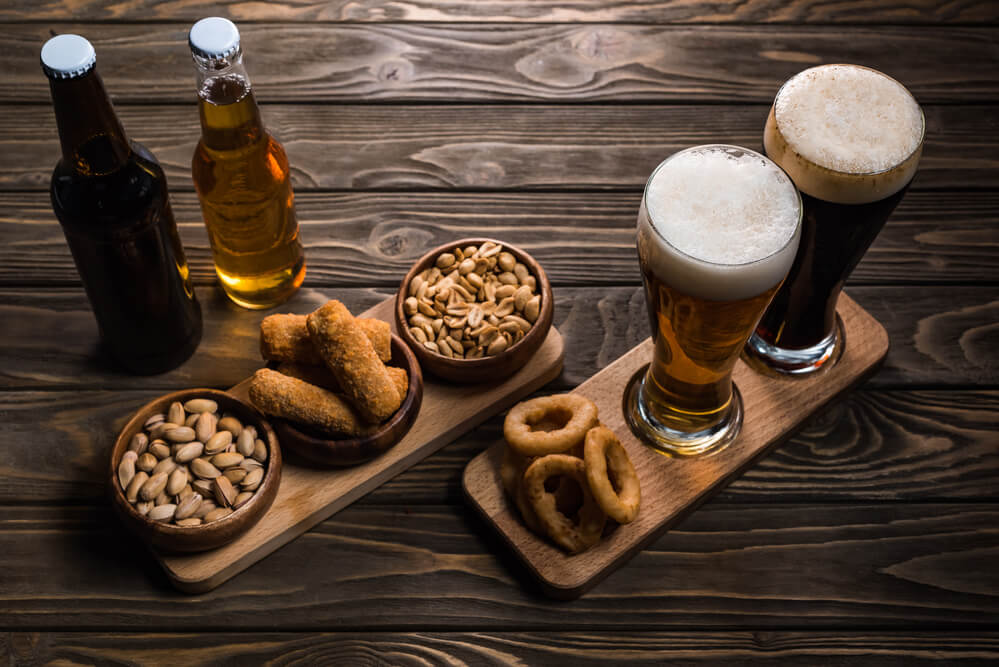What is Golden Ale? In this article, you will learn interesting facts about Golden Ale.
Golden ale, a recent addition to the beer world, has quickly gained popularity amongst beer enthusiasts. This relatively new style of beer has a few fascinating characteristics that set it apart from other varieties. Despite being a newcomer, golden ale has established a strong presence in the world of brews, boasting a wide range of interesting facts and nuances.
One aspect that makes golden ale stand out is the confusion surrounding its distinction from Belgian golden ales and blonde ales. However, breweries have embraced the golden ale name to represent a style that shares similarities with classic blonde ales, but not explicitly referring to traditional Belgian golden ales source. This unique beer style features a straw-golden color with a light, crisp taste, often disguising a higher alcohol content than initially expected.
Breweries have taken notice of the rising interest in golden ales and have responded by creating their own distinctive renditions, incorporating a variety of flavors and brewing techniques. Such diversity among golden ales offers something for every palate while contributing to the acclaim the style has received in a short period. As the golden ale continues to make waves in the beer industry, there’s no doubt that its intriguing facets will captivate the taste buds of curious drinkers for years to come.
Table of Contents
Golden Ale Overview

Golden ale is a popular beer style known for its clear, crisp, and dry taste. In general, it has a modest alcohol content of around 4-5% ABV, making it a light, easy-drinking alternative to heavier beers or hoppier IPAs1. This style of beer is accessible to various palates, making it an excellent choice for those who prefer a less bitter and more refreshing drink.
Brewed mainly as an ale, golden ales differ from lagers in their fermentation process. Ales are typically fermented at higher temperatures, resulting in a range of flavors that can be fruity, earthy, or even spicy2. Golden ales’ distinct taste comes from the balance between the malt and the hops, with the hops providing a subtle bitterness to the beer.
Golden ales can be found in two main styles: American and Belgian3. The American style golden ale is generally lighter in color and has a smoother, milder taste compared to its Belgian counterpart. It traditionally uses American hops, giving the beer a slight citrus or floral aroma. On the other hand, Belgian golden ales are often spicier and more complex in flavor, with a higher alcohol content. This style incorporates Belgian yeast strains, which contribute unique fruity and spicy notes.
In recent years, golden ales have gained popularity as a refreshing and versatile beer option. While they may have been overshadowed by more robust and bold styles in the past, golden ales have carved out a niche in the beer market4. Their approachable flavor profile allows them to pair well with various foods, from light salads to spicy dishes, making them a go-to choice for many beer enthusiasts.
History and Evolution
The emergence of golden ales can be traced back to the early days of the craft beer movement. Originally designed as a response to the mass-produced American lagers produced during World War II using inexpensive grains like corn, golden ales quickly found favor among craft brewers who sought to create a beer style that drank like a lager but showcased the quality and uniqueness of craft brewing1.
The Great American Beer Festival, an annual event celebrating the diversity and expertise of American craft brewers, has played a significant role in popularizing golden ales and spreading awareness of the style throughout the United States. Over the years, the competition has seen a growing number of craft breweries enter their golden ales in various categories, reflecting the style’s evolution from a niche offering to a staple in the craft beer world2.
Golden ales have evolved through the passion and creativity of craft brewers experimenting with various brewing techniques and ingredients. Light, delicate, and easy to drink, golden ales have managed to stand out among a wide variety of beer styles thanks to their crisp and refreshing taste3. This has made them an ideal choice for those looking to explore the world of craft beer without being overwhelmed by bolder or more aggressive flavors.
Marketing has played a vital role in the success of golden ales. Craft breweries have employed innovative strategies to connect with target audiences and create a sense of camaraderie around their offerings. This has helped golden ales become a popular choice for beer enthusiasts looking for something approachable and easy to enjoy, while still offering the quality and distinctiveness associated with craft brewing4.
In conclusion, the history and evolution of golden ales as a respected beer style can be attributed to the growing craft beer movement, the passion and innovation of craft brewers, the support of events like the Great American Beer Festival, and effective marketing strategies that have promoted the style’s unique characteristics.
Production and Ingredients
Golden ales are a popular choice among beer enthusiasts due to their balanced flavor and easy-drinking nature. The production process and ingredients contribute to the characteristics that make golden ales a favorite among many.
The base ingredient of golden ales is malted barley, providing a subtle maltiness. However, depending on the style and the brewer’s choice, other grains like corn, wheat, or rye may also be used as supplementary ingredients. The use of grains not only guides the flavor profile but also influences the beer’s color and appearance.
Fermentation plays a significant role in defining golden ale’s distinct flavor. Top-fermenting ale yeast is typically used, resulting in a relatively quicker fermentation process compared to lagers. Ale fermentation occurs at warm temperatures, generally between 68 to 72 degrees Fahrenheit. This warmer environment allows for a faster and more thorough fermentation, imparting fruity and spicy notes to the final product.
Carbonation is another important aspect of golden ales that determines the beer’s mouthfeel and overall perception. Moderate to high levels of carbonation is common in this style, providing a crisp and refreshing sensation on the palate.
Golden ales typically have an ABV (alcohol by volume) in the range of 4-6%. This moderate alcohol content makes them an appealing option for casual drinkers and those who appreciate a sessionable yet flavorful beer.
It is worth noting that golden ales should not be confused with other darker beer styles like brown ales or stouts. These styles differ significantly in various characteristics, such as maltiness, bitterness, and color. Golden ales lean towards a lighter, more balanced profile that is suitable for easy consumption and versatility in pairing with food and social gatherings.
In conclusion, the production and ingredients of golden ales contribute to their crisp, refreshing, and balanced characteristics. A combination of carefully selected grains, the fermentation process, carbonation, and moderate alcohol content define the unique quality of this beloved beer style.
Types of Golden Ales
Belgian-Style Golden Strong Ale
Belgian-Style Golden Strong Ales are known for their fruity and spicy flavors, with a high alcohol content typically ranging from 7.5% to 10.5% ABV. These beers are characterized by a complex, often fruity and spicy fermentation profile, with a clear pale to medium golden color. One example of this style is the New Belgium Tripel. This style originated in Belgium and gained popularity among beer enthusiasts for its unique taste and complexity. The brewing process for Belgian-Style Golden Strong Ales often involves the use of specialty grains, Belgian yeast strains, and a variety of hops. The result is a well-balanced, effervescent beer that is perfect for sipping on special occasions.
American Golden Ale
The American Golden Ale, on the other hand, is a more recent innovation that emerged during the American craft beer movement. This style of beer is characterized by its light, crisp, and refreshing taste, often with a lower alcohol content compared to its Belgian counterpart. Typically ranging from 4% to 5% ABV, American Golden Ales are an ideal choice for those seeking a more sessionable beer. One notable example in this category is the Perrin Brewing Company Golden Ale.
American Golden Ales are inspired by traditional European styles, such as the Belgian-Style Golden Strong Ale, but with a unique twist that showcases the creativity and ingenuity of American brewers. These beers are brewed with American hops and malt, often resulting in a more pronounced hop character and a subtle malt backbone. The color of this beer can vary from pale gold to deep amber, and the flavors are typically clean, without the fruity or spicy notes often found in Belgian-Style Golden Strong Ales.
In conclusion, while both Belgian-Style Golden Strong Ales and American Golden Ales share the same golden color, they are distinct styles with unique flavors and characteristics. Whether you’re a fan of the complex and rich taste of Belgian-Style Golden Strong Ales or the light and refreshing notes of American Golden Ales, there’s a golden ale to suit your preference.
Taste and Experience
Golden ale is a popular choice among beer enthusiasts due to its balanced flavor profile and easy drinkability. The taste of a golden ale is characterized by a subtle sweetness, light maltiness, and a hint of familiar citrus flavors1. This delightful combination offers a clear, crisp, and dry sensation on the palate, with little to no aftertaste.
Typically, the alcohol by volume (ABV) in golden ales ranges from 4% to 5%2. This modest alcohol content adds to the appeal of golden ales as a light, easy-drinking alternative to heavier beers or hoppier IPAs.
The brewing process of golden ales involves a mash of grains, malt extracts, and malt3. Additional additives and flavorings may be incorporated after the boil and fermentation stages, which allows for variations in taste among different golden ales.
Some golden ales exhibit a more pronounced hop profile, while others lean towards a maltier flavor. As a result, the experience of drinking a golden ale can vary depending on the specific brewing style but, overall, the taste remains approachable and refreshing.
When it comes to food pairings, the versatility of golden ales makes them an excellent choice for a variety of dishes. Their light and crisp attributes complement seafood, salads, and grilled chicken, while their subtle sweetness can also balance spicier dishes like curry or Thai cuisine4.
In conclusion, the taste and experience of a golden ale promise a satisfying and refreshing beverage that caters to diverse palates and various food pairings. Its well-rounded flavor profile and easy drinkability position it as a go-to choice for beer lovers looking for a delightful and uncomplicated drinking experience.
Popular Golden Ale Brands
Suncrush Beer Tangerine Suncrush is a refreshing beverage that combines cold-conditioned sparkling ale with crushed fruit, matcha green tea, and natural flavors. This tasty beverage not only offers a unique combination of flavors but is also gluten-reduced and all-natural, making it an excellent choice for those with dietary restrictions or conscious lifestyle choices source.
Next on our list is Squatters Chasing Tail Orange Golden Ale. This particular golden ale is known for its bright and citrusy flavors, making it a perfect option for those who seek a more fruity and zesty twist. The addition of orange complements the ale’s crisp taste, creating a refreshing and delightful experience.
Another exciting brand worth mentioning is Bootstrap Brewing 1956. This golden ale showcases light-to-medium body, a clean finish, and a balanced flavor profile, making it an excellent option for those who enjoy a sessionable beer. Bootstrap Brewing truly delivers with a flavorful and drinkable experience captured in their 1956 Golden Ale.
Cigar City Golden Ale is another reputable brand, featuring a richly flavored yet crisp golden ale that is perfect for various occasions. Its hints of citrus and delicate, balanced character make it an appealing option for both seasoned and new craft beer enthusiasts.
Perrin Brewing Gold, as the name suggests, is a shining example of golden ale. Its bright, friendly flavors, along with its light-to-medium body, make for an enjoyable and easy-drinking option. Perrin Brewing continues to deliver quality brews with their Gold ale.
Finally, it’s essential to highlight the original Belgian Golden Ale style, renowned for its fruity and complex notes achieved through the specific type of Belgian yeast used during brewing source. This Old World style serves as a foundation for other contemporary golden ales, and its continued popularity speaks to its enduring appeal.
In conclusion, these popular Golden Ale brands each bring their unique twist to the beer market. Explore these different options to find the one that best suits your taste preferences, or try them all to experience the full range of what Golden Ales have to offer.
Golden Ale Vs. Other Ales
Golden ales are a unique category of beers that offer a balance between maltiness and bitterness, providing a lighter, more refreshing alternative to many other ale styles. In comparison to pale ales, golden ales typically have a straw to medium blonde color and a lower alcohol content, usually ranging from 4-5% ABV. This makes them an attractive option for those seeking a flavorful yet easy-drinking beer.
Golden ales are known for their clear, crisp, and dry taste profile, with little to no after-taste. This sets them apart from many other ales, which often have more complex or lingering flavors. Notably, golden ales can be found in two main styles: American and Belgian. While both styles share characteristics such as light color and floral hop aromas, they may differ in body, yeast character, and malt backbone.
The beer industry has seen much growth and diversification over the past few decades, with the introduction of numerous beer styles and increased experimentation among craft brewers. While golden ales are not as popular in North America as they are in the UK, Europe, and South America, they have found a niche among beer enthusiasts who appreciate their light, easy-drinking nature.
In the context of the low-alcohol beer market, golden ales can be seen as an appealing option for those seeking a brew with a moderate alcohol content. Unlike many non-alcoholic or low-alcohol beers, which can lack flavor and body, golden ales retain the full-flavored characteristics of other ales while keeping the ABV at a more manageable level.
With their balanced, approachable flavor profile and low-alcohol content, golden ales hold a unique position within the wider range of ale styles. As the beer industry continues to expand and evolve, golden ales remain a notable choice for those seeking a refreshing, easy-drinking beer that still offers depth and character.
Ratings and Judging Guidelines
Golden Ales are known for their approachable, easy-drinking character, with no dominating malt or hop characteristics. Rounded and smooth, these beers can sometimes have added honey, spices, and fruit, making them a popular choice among beer drinkers in the US and UK.
One important resource for judging beer styles is the Beer Judge Certification Program (BJCP), which provides detailed guidelines for understanding and evaluating different beer styles, including Golden Ales. According to the BJCP, Golden Ales should have a straw-to-gold color, low to medium body with a crisp finish, and low malt sweetness with toast or cereal-like attributes present in flavor and aroma at low to medium-low levels.
Ratings for Golden Ales can be found on websites like Beer Advocate and Tastings, which provide expert reviews and ratings alongside user-generated reviews. These resources help beer drinkers make more informed choices when looking for a new brew to try.
In the UK, beer competitions like the Great British Beer Festival also play a pivotal role in rating and evaluating beers, including Golden Ales. These competitions follow rigorous judging guidelines and often enlist experienced beer judges, brewers, and industry professionals to assess the quality, flavor, and other attributes of each entry.
When rating and judging Golden Ales, it’s essential to consider factors such as:
- Appearance: Straw-to-gold color, with varying levels of clarity.
- Aroma: Low malt sweetness, toast, cereal-like or other pale malt attributes should be present.
- Flavor: Balance between malt and hop characteristics, with no single element dominating the overall profile.
- Mouthfeel: Low to medium body with a crisp finish.
- Overall Impression: A balanced, approachable, and easy-drinking beer that appeals to a wide range of beer drinkers.
By understanding and following these guidelines, beer enthusiasts and professionals alike can better appreciate the qualities of a well-crafted Golden Ale and make educated decisions when evaluating and rating these brews.



